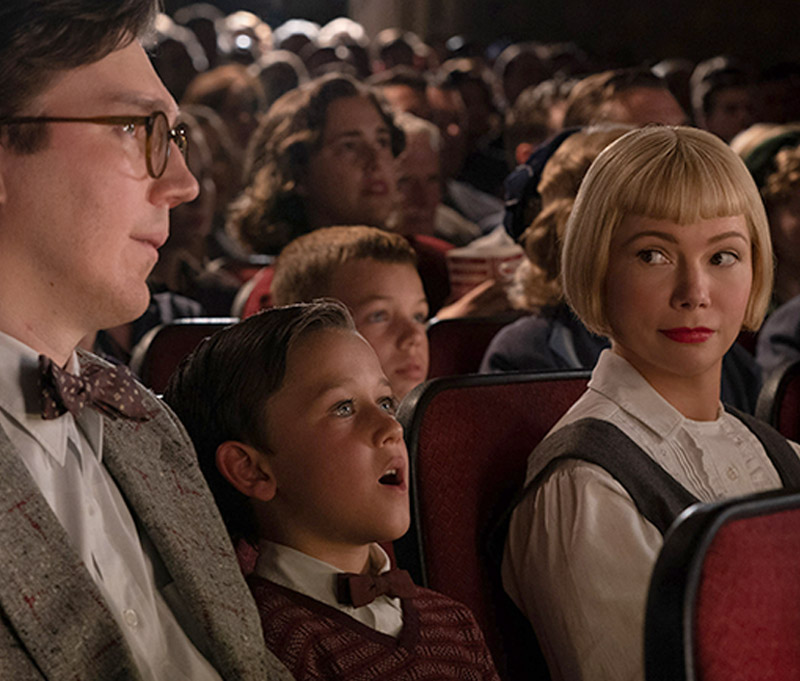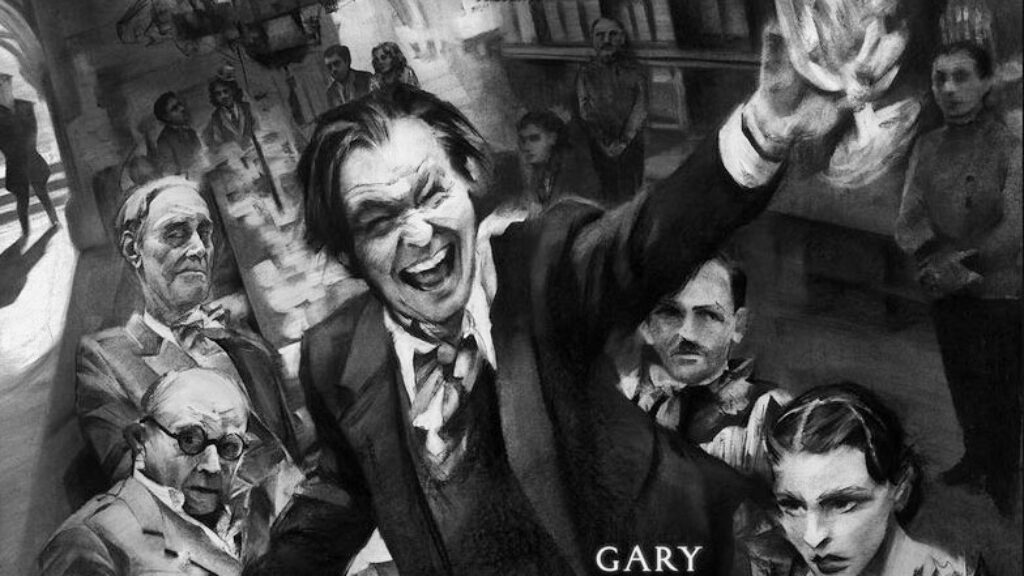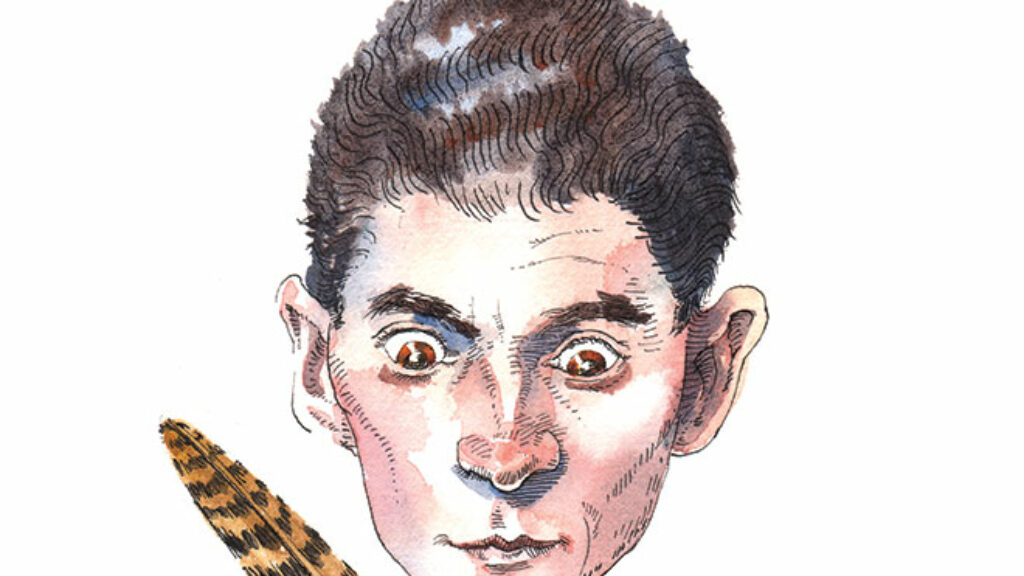Spielberg’s Fable
At the end of “Millennium Approaches,” the first half of Tony Kushner’s play Angels in America, an angel descends through the ceiling of Prior Walter’s hospital room in a blaze of special effects, described in the stage directions: “The light turns an extraordinary harsh, cold, pale blue, then a rich, brilliant warm golden color, then a hot, bilious green, and then finally a spectacular royal purple.” Prior, who is suffering terribly from AIDS, has the presence of mind to quip in “an awestruck whisper”: “Very Steven Spielberg.”
Kushner has said that he was influenced by Walter Benjamin’s notion of the Angel of History, a recorder who bears witness to all the victims he is powerless to save. But the line acknowledges that in the 1980s, when the play is set, any American receiving an extraterrestrial visitor would think first of Spielberg’s blockbusters Close Encounters of the Third Kind (1977) and E.T. (1982).
Prior’s reference to Spielberg is camp: like Kushner and the Broadway audience, he knows that Hollywood aliens aren’t a respectable way to think about the divine. Yet there’s no denying that our imaginations are a product of Spielberg’s. His visual language is instantly recognizable: E.T. pedaling a bicycle through the moonlit sky; a glass of water rippling as dinosaurs approach in Jurassic Park (1993); a lone fin prowling the water in Jaws (1975). These images and what they mean may be familiar to more people worldwide than Moses parting the Red Sea—the original special effect.
Fittingly, a dozen years after Angels in America came to Broadway, Kushner started writing Spielberg movies—not the sci-fi ones like A.I. (2001) and War of the Worlds (2005), but prestige historical dramas. Munich (2005), about the Israeli mission to assassinate the perpetrators of the 1972 Olympics massacre, was followed by Lincoln (2012), about the sixteenth president in the last months of the Civil War. The partnership works because Kushner and Spielberg, for all their differences, belong to the same venerable tradition in American Jewish culture. Like Louis B. Mayer, Rod Serling, Herman Wouk, Joe Shuster and Jerry Siegel, and Rodgers and Hammerstein—to make a start on a long list—they believe that entertainment and edification go together. Starting in the 1960s, figures like Lenny Bruce, Woody Allen, and Philip Roth made Jewishness synonymous with neurosis and transgression, leaving their earnest predecessors looking square by comparison. But the embrace of meshugas hasn’t been an unmixed blessing, either for American culture or for the Jews.
In their new film, Kushner and Spielberg turn to a more private kind of history. The Fabelmans is the story of Sam Fabelman, who we follow from early childhood to the brink of adulthood as he discovers his calling as a filmmaker and his family falls apart. In interviews Spielberg has said that the major plot points come directly from his own childhood in the 1950s. Burt Fabelman is a computer engineer, like the director’s father Arnold Spielberg; Mitzi Fabelman is a one-time concert pianist turned frustrated homemaker, like his mother Leah Spielberg. The Fabelmans move from New Jersey to Arizona to northern California, just as the Spielbergs did, and both families have three daughters and one idolized son.
In an interview with The Hollywood Reporter, Kushner explained that he named the movie family after the German word for “fable,” an deft choice: a story isn’t a fable unless it teaches you something, and Spielberg’s movies have always sent us home with a clear moral. Close Encounters tells us not to be afraid of the unknown; E.T., that there’s no place like home; A.I., that a boy’s best friend is his mother. These are all very acceptable lessons, appealing to what we like to think of as the best in us, and they made for very popular movies. Which is not to say the messages were cynically focus-grouped; an artist doesn’t become as popular as Spielberg by talking down to the audience. He has to believe that he is delivering important truths, and Spielberg does, just as Rodgers and Hammerstein believed that You’ll Never Walk Alone and You’ve Got to Be Carefully Taught. And these are truths, though they may not be the whole truth and nothing but the truth.
The message of The Fabelmans is cloudier than in most Spielberg movies, because the moralizing impulse and the confessional impulse pull it in different directions. The message it seems to want to deliver is that you should always follow your passion, a familiar article in Hollywood’s creed. “You do what your heart says you have to,” mother tells son near the end of the movie. But this principle plays out very differently for the two of them. Sam’s heart tells him to drop out of college and get a job in Hollywood, and since he is Steven Spielberg, there is no doubt that this is the right choice. In the final scene, a dazzled Sam (played by Gabriel LaBelle) emerges from the studio office of his idol John Ford, whose gruff wisdom he has just absorbed, and dances down the road like Gene Kelly in Singin’ in the Rain. His dreams are already coming true.

For Mitzi, on the other hand, following her passion means leaving her husband for his best friend Benny, who is still pining for her back in Arizona. Sam is furious with her when he discovers the affair, which he does by scrutinizing footage he has shot of a family camping trip on which Benny tagged along—the same way David Hemmings discovers a murder in Blow-Up. But Sam forgives his mother, as we know he will, because the movie has insisted from the start that they are soulmates. If we believe it, it’s because of Michelle Williams, who plays a doting mother with tremendous conviction. Early on, when Sammy is a six-year-old boy, she stares into his face with unsettling, hungry adoration, hinting at emotional needs that even a prodigy can’t satisfy.
Their kinship is defined in a scene that feels too thematically apt, and too Kushnerian, to be based on a real event. When Sam is a teenager, the family gets an unexpected visit from Mitzi’s uncle Boris, played with hammy gusto by Judd Hirsch. As a boy, Boris ran away from home to get into show business, and even though all he became was a circus stuntman and Hollywood extra, he doesn’t regret it. Late at night in Sam’s bedroom, he tells the boy that Mitzi too had an artistic calling as a pianist, but her parents discouraged her and she gave it up. “Art is as dangerous as a lion’s mouth,” Boris roars, warning Sam that he will have to choose between his filmmaking and his family.
It’s clear that Mitzi never lost her taste for living dangerously. When the children spot a tornado from their front window—shades of The Wizard of Oz—they are satisfied with exclaiming over it, but Mitzi piles them in the car and drives straight into it. Burt, well played by Paul Dano as a benevolent but annoying nerd, isn’t the right husband for such a force of nature. It’s not clear that Benny is, either; as an actor, Seth Rogen isn’t in the same class as Williams, and he comes across as a fun uncle more than a kindred spirit. But in the movie’s terms, Mitzi and Benny belong together as certainly as Sam and his 8mm camera.
In its first half, The Fabelmans seems to be headed for tragedy: mother and son both want something too much and will have to pay a price for it. The movie is never more emotionally powerful than in these early scenes, particularly the very first sequence, when the six-year-old Sam is traumatized by seeing a train crash in a movie. An anxious child, he can’t rid himself of the vision until he figures out a way to reenact it using toy trains. When Mitzi suggests filming the reenaction so he can watch it whenever he needs to, a lightbulb goes off in Sam’s head. Out of neurotic anxiety, a filmmaker is born.
The scene is staged as Spielberg’s equivalent of Charles Foster Kane’s “Rosebud,” and it feels like an authentically Jewish equivalent. It’s not just that in the first part of the movie we see the Fabelmans saying a brakha over the Hannukah candles, or that these scenes feature Judd Hirsch and Jeannie Berlin, as Mitzi’s mother, who sound and look Jewish as no one else in the movie does. Above all, what rings true is Mitzi and Sam’s anxiety, and the way it binds them together even as it isolates them from the rest of the world.
This anxiety is never explicitly connected to Jewishness, but as young Sam is haunted by visions of trains, it’s impossible not to wonder what horrors he has heard about—in this Jewish household in the early 1950s—involving trains. In an interview about The Fabelmans on NPR, Spielberg said that when he was three years old, he was taught numbers by a friend of his grandmother, a Holocaust survivor who used his Auschwitz tattoo as a textbook: “And then I’ll never forget this, and he said, ‘And that’s a 9.’ And then he cooked his arm and inverted his arm and said, ‘And see, it becomes a 6. It’s magic.’”
Why isn’t that memory, so haunting and so visual, in The Fabelmans? It’s a question of genre. The Holocaust would puncture Spielberg’s fable by introducing historical and emotional realities from which no moral can be drawn. The cost of being an edifying popular artist is that there are truths you can’t tell. This, after all, is the director of Schindler’s List, a Holocaust movie in which prisoners are herded into an Auschwitz shower and no gas comes out—it turns out to be a real shower.
After these early scenes in The Fabelmans, Jewishness disappears as a subject and even as local color. When Jewishness returns in the last third, it’s in strictly cartoon form. Sam, now attending a California high school full of tanned blonds he nicknames “the giant sequoia people,” gets bullied by Logan, an antisemitic classmate who calls him “Bagelman” and drives the thrust home by putting a bagel in his locker. Logan even calls Sam a Christ-killer, to which he retorts, “I’m not 2,000 years old and I’ve never been to Rome”—a line that tells us a lot about Kushner and Spielberg’s knowledge of religion and history. Wasn’t there at least one person working on The Fabelmans who could have pointed out that Jesus was crucified in Jerusalem?
On the brighter side, Sam starts to date a devout Christian girl who uses Jesus as an aphrodisiac, inviting Sam to pray with her (“Ask Him to enter you”). All of this feels like it belongs to a different movie than the first half of The Fabelmans—maybe Gidget with a splash of Portnoy’s Complaint.
Once we have entered this world, tragedy is inconceivable. When Mitzi finally leaves Burt and moves back to Arizona with her three daughters, it may be sad, but no sadder than millions of other divorces, and maybe a bit less. At least we know Mitzi and Benny will be happy. Sam, meanwhile, stays on in California with his father, where he complains that he has been writing letters to hundreds of people in the “industry” without a single response. As soon as he says it, we know that his father will hand over the day’s mail and it will include a letter with a job offer, and that is just what happens. For all the talk of lion’s mouths, we never see Sam suffer for his art. Certainly he doesn’t have to betray anyone, or choose between what he is called to say in film and what his family wants to hear.
There is one moment, however, where the ethics of Spielbergian art are challenged in a fascinating way. A classmate named Logan beats Sam up in alliance with the Jew-hating Chad, but when Sam makes a movie about the senior class to show at prom, Logan appears as the hero—a victorious golden god.
To Sam’s surprise, Logan is deeply freaked out by this homage from a boy who ought to hate him. The disparity between the way he looks on screen and the way he knows himself to be in real life drives him to tears of guilt. And maybe that was the whole point, for when Chad comes storming up to get revenge on Sam, Logan decks him. By making the gentile look better than he really is, the Jewish artist goads him into living up to the image. At bottom, the scene suggests, the idealism and moralism of the Jewish popular artist is a survival strategy based on guilt. It is such an acute and damning insight that it’s genuinely surprising to find it in a movie like The Fabelmans. I bet it was Kushner’s idea.
Comments
You must log in to comment Log In
Suggested Reading

The Mocker and the Makhers
Herman Mankiewicz's life wasn't all drunken bets and witty repartee. After all, he wrote Citizen Kane. Life in 1930s "Eretz Demille."
A Spy’s Life
Sylvia Rafael: The Life and Death of a Mossad Spy opens not with an intrepid secret agent about to pull off a bold maneuver, as books with such titles usually do, but with nine men gathered around a table in 1977, studying a picture of an Israeli agent.

In the Beginning, There Was Angst
Where a committed secularist would raise up the literary in place of the sacred, Adam Kirsch’s discussions in The Blessing and the Curse read more like a coda to the sacred scriptures.

Black Hats, Green Fatigues
They don't like the Z-word, but new haredi IDF soldiers sound a lot like the old Zionists.
Mashey Bernstein
Just for the record: Kirsch gets some facts and people wrong. Chad Thomas (and not Logan) is the one who taunts Sam (Fabelman) with slurs and antisemitic remarks, and it is implied leaves the bagel with an antisemitic inscription in Sam's locker. Logan (Sam Rechner) is Chad's enabler. Logan does not hit Sam over his Jewishness but because Sam reveals what Logan was doing in the stairwell. It's never clear how antisemitic Logan really is as he often seems to defend Sam. Chad is also the runt in the pack of the "Sequoias."